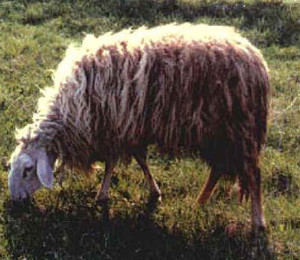Garessina (I)
Description
Garessina is a breed of medium size with an average ram weight of 50 to 55kg. Rams and ewes animals are hornless. The head is short and delicate; rams have a more pronounced Roman nose than female animals. Ears are of medium length and stick out backwards. The wool is straw coloured white, of medium length, half-closed and relatively fine.
General and History
The breed Garessina belongs to the group of lops Eared Alpine sheep. The breed originated through crossbreeding original sheep from the Appennine with Merino and French Alpine sheep.
Distribution in the past and today
Main area of distribution is in Piedmont and Liguria in Cueno and Savona Provinces in the valley of Tanaro, Negrone and Casotto.
Utilization
The breed was mainly used for mutton production. In former times, approx. 90% of the incomes were generated through mat and 10% trough the wool sale. Garessina were sometimes also kept for milk production.
Keeping
Traditionally, the sheep were kept in the mountains in small herds during summer and close to the stable in the valley during winter. The breed is excellently adapted of difficult climatic conditions.
Performance
Milk yield of the ewes is approx. 220kg.
Body weight: 50-55kg (m), 45-50kg (w)
Withers height: 60-65cm (m), 55-60cm (w)
Fleece weight: 2.5kg (m), 2kg (w)
Lambing percentage: 120-150%
Processing and products
Cheese "Tomette"
Literature
Schafrassen der Alpen, Antje Feldmann, Ursula Bietzker, Dr. Christian Mendel, Herausgeber: Gesellschaft zur Erhaltung alter und gefährdeter Haustierrassen e.V. - GEH, Deutschland, Sept. 2005
Günter Jaritz: Seltene Nutztiere der Alpen, 7000 Jahre geprägte Kulturlandschaft, Verlag Anton Pustet, 2014








